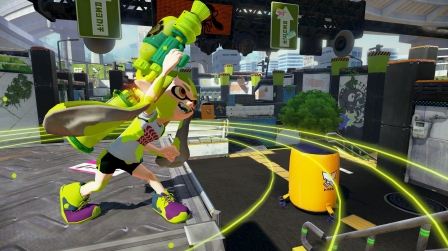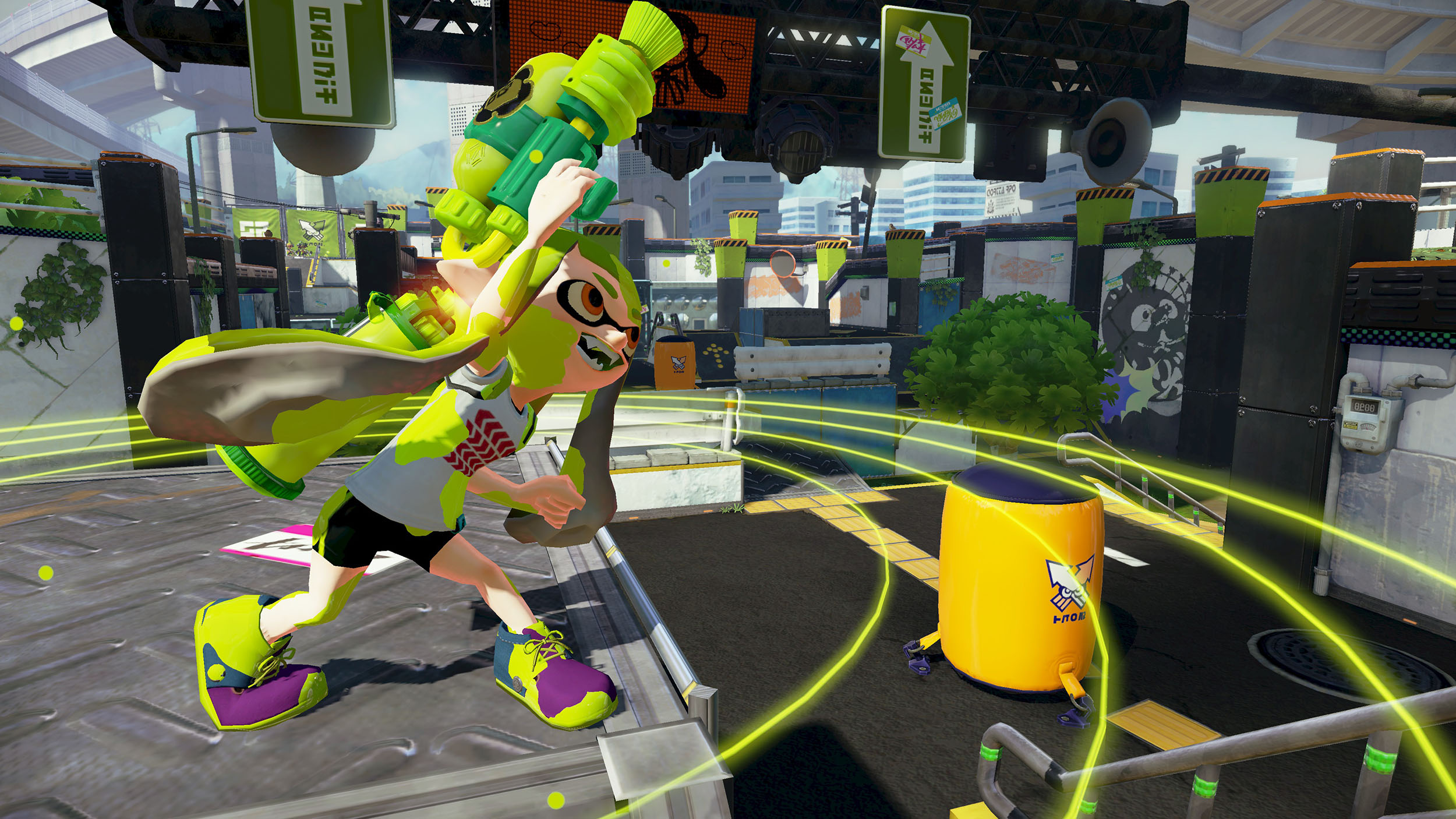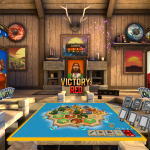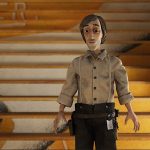‘Splatoon’ isn’t dead, but it’s still saying goodbye
Today at 5 AM EDT, the final Splatfest commenced for players of Nintendo’s squid-kid shooter Splatoon. Players were asked to choose one of two teams representing the in-game hosts, Callie and Marie. At the end of the festival, members of the team with the highest score will get a prize, the losing team will get slightly less, and so will end Nintendo’s active promotion of the game. It was inevitable, of course, as the game came out over a year ago. But Splatfests were one of the biggest ways for the company to foster community among Splatoon players, and their discontinuation is likely to bring about a sharp decline among active users. It’s been a great run, but this is the end of an era for the game.
Active community building is key for a title whose developers intentionally waived voice chat in order to avoid the hostility that normally pervades online interactions. I’ve certainly had moments where I’ve cursed and screamed at my TV during a particularly fraught Splatoon match, things I wouldn’t want the 10-year-olds I’m probably playing with to hear. But when person-to-person interactions are limited to a user handle on a screen and canned responses, how do you get players to bond over a game?
reminder to everyone who thought Splatoon should’ve had voice chat: https://t.co/3s8iGW0lMh pic.twitter.com/XdNwzxMo8m
— Nick Robinson (@Babylonian) December 17, 2015
A strong fan culture has grown up around Splatoon over the past year. It’s taken the form of cosplayers at conventions, all with their own take on the game’s unique brand of street style. If you search on Tumblr you’ll find artwork galore, including plenty of Callie and Marie art (as well as plenty of posts looking forward to this weekend’s Splatfest). I even bought a Splatoon fashion fanzine. Yes, you read that right. A fashion magazine, complete with a fake mascara ad.
It’s not unusual for quirky, oddball games to draw a sizable fanbase. But it’s a bit more meaningful for Nintendo: The company has leaned heavily on the loyalty that players have for established franchises like Mario and Zelda, but it hasn’t been enough to prevent flagging Wii U sales. Nintendo needed something to stand out, especially in an industry where the biggest titles all seem to be multiplayer extravaganzas like Destiny and Overwatch. Nintendo needed Splatoon to make an impact. Other than the Mii avatars and accompanying apps like Miitomo, the company hasn’t produced something this fresh since Pikmin in 2001. (Other new series, like Xenoblade Chronicles and the upcoming Ever Oasis, have been produced by subsidiaries and second-party developers.)
Amazing #Splatoon cosplay found near our booth at #NYCC! pic.twitter.com/U4Oia8J5X3
— Nintendo of America (@NintendoAmerica) October 10, 2015
For many who own the Xbox One or PlayStation 4, community is why they’ve chosen those particular consoles. Most online games don’t support cross-platform play (yet), so if you want to play with your friends you need to buy the same system as they have. However, Nintendo’s never been great at the internet, especially when it comes to building bridges between players. The Wii and the DS relied on long, annoying “friend codes” for players to connect to one another. Even then, the amount of contact you had with your companions was somewhat limited. I’ve visited my friends’ houses in Animal Crossing and traded Pokémon with them but, without basic features like messaging and chat, Nintendo games have largely been a solitary experience in terms of how much interaction you have with other players.

Splatfests were one of the ways Nintendo tried to make up the difference. If you couldn’t connect with other players person-to-person, the company found a way to bring players together in a larger group by allowing them to choose a tribal identity. Were you Team Marshmallow or Team Hot Dog? Team Science or Team Art? Or, in one of the few sponsored events, Team Autobot or Decepticon?
The temporary nature and low stakes of Splatfests also served to make them more fun by taking the pressure off the decision to choose the “best” team: The results didn’t change the game for players in any significant way. Tribes were formed and dissolved in the course of a day and someone on the losing side in one event might easily find themselves a winner the next go-around. These festivals also brought everyone together into the game at the same time, meaning there was at least one day where it felt like everyone was involved: Even if you couldn’t talk to them, you knew they were out there, also playing Splatoon. Splatfests gave people a sense of connection to something bigger than themselves, if only for a little while.
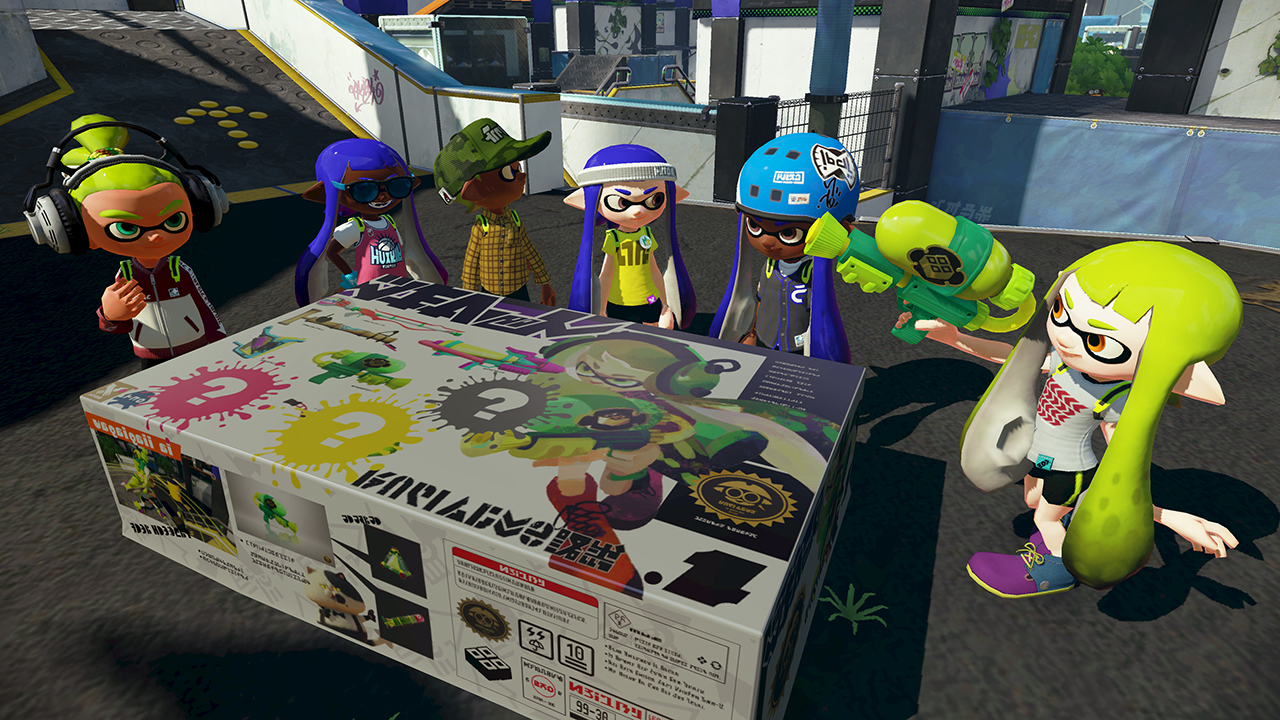
This might seem silly, but plenty of games have used team identity to build dedicated communities. A recent example would be Pokémon Go, which asks players to sort themselves into one of three groups: Team Valor, Team Mystic or Team Instinct. There are colors along with associated Pokémon for each, as well as some vague spiel about what each team supposedly stands for, but ultimately the teams don’t matter much unless you’re looking to battle at a gym. And yet, players who are perfectly happy to spend their time with the game only catching Pokémon will still proudly proclaim which clan they’re a part of. (I’m Team Mystic, by the way.) In the short time the game has been out I’ve seen people chide each for the “wrong” choice, memes proclaiming the supremacy of one over the other and even fan-designed t-shirts on sites like TeeFury.
See. Even @TheRock knows who the better team is.#PokemonGO #TeamMystic pic.twitter.com/ntFqUjXAdv
— Team Mystic (@PGOTeamMystic) July 22, 2016
With the end of Splatfests, Splatoon loses a big part of its community feel. Sure, the servers will stay active for a few years, meaning you can still engage in a quick three-minute battle whenever the mood strikes you. But you’re not playing the game to bond with the other players on your squad; they’re nothing more than names on a screen. The randomness of the team rosters also means that someone can be your ally one round and your opponent the next. You’re no longer playing Splatoon to make friends.
When games stop being updated and most people are already talking about the next big thing, the reason people return to a game is because of the bonds they’ve formed. Nintendo built a great fandom around Splatoon, but the company is ready to move on, and fans of its current games are being shown the door. Nice to know you: Maybe we’ll invite you back for Splatoon 2.
(31)

